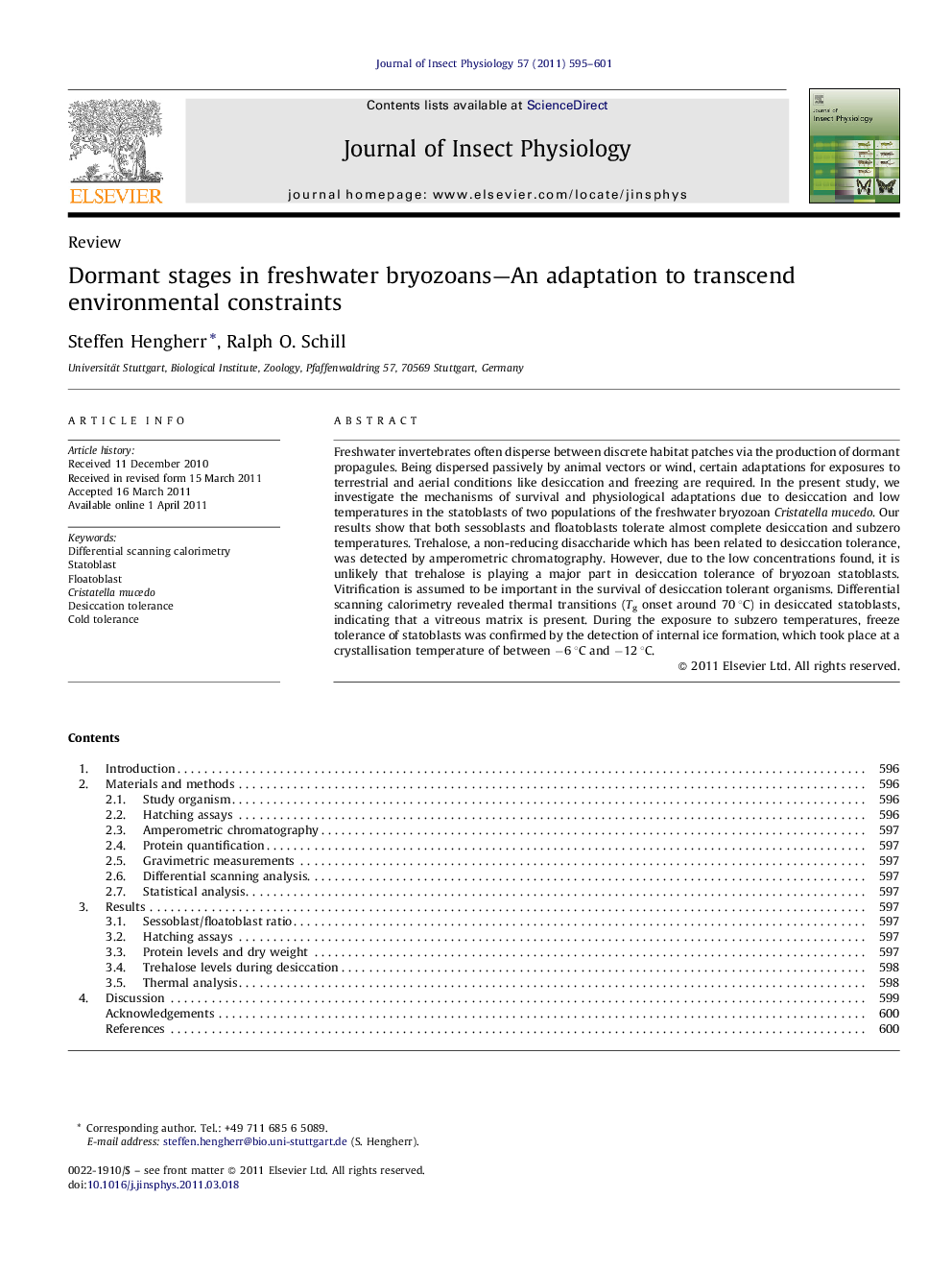| Article ID | Journal | Published Year | Pages | File Type |
|---|---|---|---|---|
| 2840602 | Journal of Insect Physiology | 2011 | 7 Pages |
Freshwater invertebrates often disperse between discrete habitat patches via the production of dormant propagules. Being dispersed passively by animal vectors or wind, certain adaptations for exposures to terrestrial and aerial conditions like desiccation and freezing are required. In the present study, we investigate the mechanisms of survival and physiological adaptations due to desiccation and low temperatures in the statoblasts of two populations of the freshwater bryozoan Cristatella mucedo. Our results show that both sessoblasts and floatoblasts tolerate almost complete desiccation and subzero temperatures. Trehalose, a non-reducing disaccharide which has been related to desiccation tolerance, was detected by amperometric chromatography. However, due to the low concentrations found, it is unlikely that trehalose is playing a major part in desiccation tolerance of bryozoan statoblasts. Vitrification is assumed to be important in the survival of desiccation tolerant organisms. Differential scanning calorimetry revealed thermal transitions (Tg onset around 70 °C) in desiccated statoblasts, indicating that a vitreous matrix is present. During the exposure to subzero temperatures, freeze tolerance of statoblasts was confirmed by the detection of internal ice formation, which took place at a crystallisation temperature of between −6 °C and −12 °C.
Graphical abstractFigure optionsDownload full-size imageDownload as PowerPoint slideHighlights► Physiological and biochemical investigations on dormant statoblasts of Cristatella mucedo. ► Very low amounts of trehalose are found in all statoblasts. ► Present vitreous states in dry statoblasts as adaptation for desiccation tolerance and dispersal. ► Freeze tolerance in hydrated statoblasts as adaptation to low temperatures.
